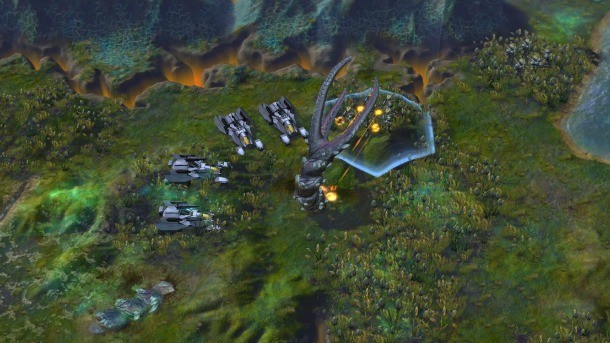Top 50 Challenge 2014 – Civilization: Beyond Earth

My colleague Daniel Tack has been sharing with me his enthusiasm about Beyond Earth since his initial review, so I jumped at the chance to dive into the game myself and see how it compares with previous Civilization titles. I’m glad I did, as Beyond Earth is a rich and complex title. While it took me a little longer to grasp its fundamentals and terminology, It was worth the effort, because the game has a lot to offer.
Learn more about the Game Informer Fight For The Top 50 Challenge 2014
Firaxis’ Civilization games have always fascinated me. Without exception, I start playing a new installment and find myself wondering what all the fuss is about as I make my way through those early turns. Suddenly, it is hours later, and I’ve become thoroughly engrossed in my burgeoning nation. In particular, I remember an early playthrough of Civilization V in which I won by sending a spaceship out into the cosmos, and I found myself wishing that the game would continue on into that new future. Beyond Earth responds to that wish.
Even as it answers my unspoken desire to carry Civilization into the future, I was surprised as I began playing Beyond Earth how unfamiliar everything feels. While basic turn structure is strongly rooted in the traditions of the series, the science fiction terminology and civilizations lack the familiarity of earlier entries. When playing an earlier Civilization game, it’s easy to understand the difference between engineering and agriculture, or to picture a civilization called Japan with special units called samurai. It’s harder for the mind to fill in the gaps when you run into technologies like cytonurseries and servomachinery, or to conjure an image of distinctions between the Kavithan Protectorate and the Franco-Iberians. It’s challenging to push past this initial sense of unfamiliar terminology, and it doesn’t help that certain technologies and actions are nearly essential in order to survive on a new alien planet – I’m looking at you, alien fencing.
Push past these initial frustrations, and Beyond Earth emerges as an engaging strategic experience. Gameplay doesn’t veer too far away from previous entries, which is usually a good thing; both Civilization IV and V were fantastic games. Like most games in the series, the mid-game is the really exciting part, as your civilization clashes with the cultures and militaries of nearby countries, and you’re still exploring and discovering the potential of your procedurally generated world.
A few distinct features help to set Beyond Earth apart. Your initial setup feels more customizable than before, as you make distinct choices governing things like the ship you arrived on, and your sponsoring organization. This sense of deeper customization extends to the game, where a wide-open tech web replaces the more linear tech trees of previous installments. Affinities also offer a deeper sense of a customized civilization, determining the path your society takes into the future and how it interacts with the flora and fauna of this new world. Finally, the thoughtfully realized quest system offers not only a deeper narrative connection to the action, but further ways to shape the nature of your people and culture.
Additional customization and unusual terminology combine to make Beyond Earth more complicated to pick up than previous installments, but that’s not necessarily a bad thing. Good science fiction is often a little confounding at first glance, and Beyond Earth matches that aesthetic.
I wholeheartedly endorse Beyond Earth as a worthy entry in our yearly Top 50. When the time comes, I’ll join Dan in his argument to see it included. It may not be the easiest Civ game to grasp, but it continues a long tradition of excellence from a developer that rarely misses the mark.

Get the Game Informer Print Edition!
Explore your favorite games in premium print format, delivered to your door.
- 10 issues per year
- Only $4.80 per issue
- Full digital magazine archive access
- Since 1991









